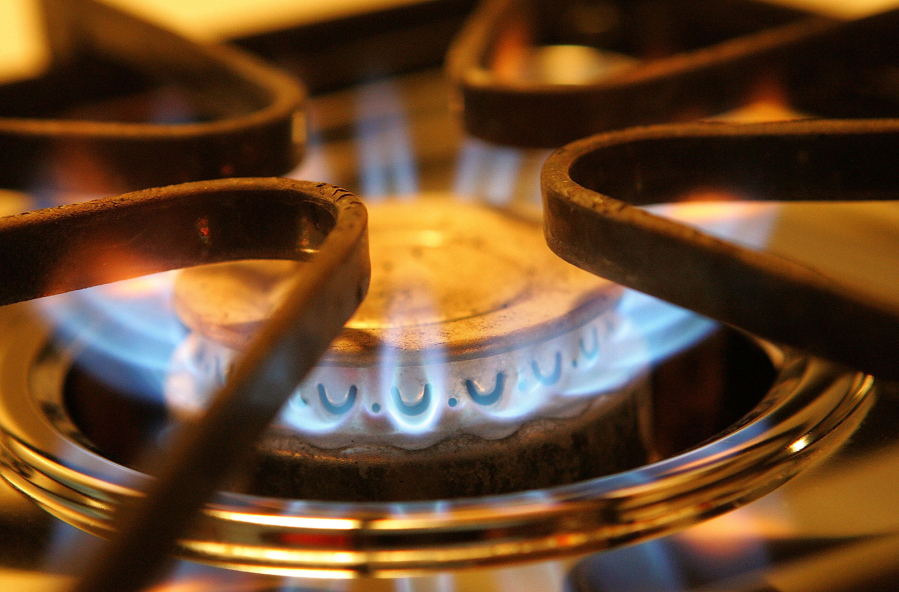Gas stoves are getting grilled.
Speculation rose last week that the U.S. Consumer Product Safety Commission could ban the appliance. The agency’s head has since clarified that the agency has no plans to ban gas stoves, but debate is raging: On social media, consumers fought over the potential risks of the appliance. Natural gas stoves do emit air pollutants at levels the World Health Organization and the U.S. Environmental Protection Agency have deemed unsafe. A peer-reviewed study published last month found that more than 12 percent of current childhood asthma cases in the U.S. can be attributed to use of the common kitchen appliance.
Gas stoves are also taking heat from environmental groups. The burners produce carbon dioxide and—according to a study—leak methane, the main component of natural gas that contributes significantly to global warming. Already, a number of cities including New York and San Francisco have moved to restrict installation of gas burners.
Bans aside, some two-fifths of U.S. homes already have one. Every household looking to change finds two options, in theory: an electric or induction stove. To the experts, that choice is easy.
“Not electric,” insists Jane Lok, manager of Flamtech Appliances Inc. in New York.
Electric stoves transfer heat from the burner to the surface. The result, explains Lok, is a cooktop that changes temperature slowly. “It doesn’t have the control that induction has,” she says.
Multiple high-end retailers suggest an induction stove, which relies on magnetism, not direct heat. An electrical current passes through a copper wire and into the pot or pan, where it’s concentrated and converted into heat. Relative to electric appliances, induction burners cook food more consistently, thanks to a more precise level of control over the temperature.
While gas stoves adorn the kitchens of many celebrity chefs and Michelin-starred eateries, induction stoves have perks, particularly for amateur home cooks. They don’t heat up the surrounding area as much as a gas burner, nor do they stay hot the way an electric burner does after being turned off, which reduces the risk of burns.
Those converting from gas stoves won’t need to search hard for the best brands: Wolf, Blomberg, Gaggenau and so forth produce the market’s top induction ranges, too. But unique touches and added features—from Wi-Fi connections to artificial flames that give the look of a gas stove—can take an induction cooktop from good to great. Finding the right one is a matter of what a buyer is looking for.
“If money is no object: Gaggenau,” says Lok. The German manufacturer offers a full-surface induction cooktop that targets heat directly to a pot or pan placed anywhere on the surface, with its induction stovetops—both full surface and regular—selling from roughly $4,500 to $6,100.
Germaine Bennerson, a sales consultant at M&M Appliance in Washington, recommends Bosch’s cooktops for their AutoChef feature; the induction stovetops sell from about $1,800 to $3,500. Essentially, the mode allows a chef to select a desired cooking level, and the appliance will flash when the countertop has reached the desired temperature. The burner will then consistently regulate the temperature of the pan.
Clumsy cooks might like Fulgor Milano’s induction cooktops, according to Greg Jones, a sales associate at SR Appliance Depot in Atlanta. The Italian company sells range tops with stainless steel finishing, a durable surface that’s easy to clean. Adds Jones: “The price is good,” with the induction rangetops starting at roughly $3,150.
Notwithstanding their allure as shiny new appliances, induction cooktops have detractors. They cost more than the purely electric option, and they’ve yet to win over many gourmet chefs who still sear steaks over gas flames.
Cookware compatible with induction stovetops must be manufactured from such materials as iron or steel, which can tap into the magnetic field spun off from the copper that stirs up the heat. All those cast-iron pots and pans can stay, in other words, as well as anything of stainless steel. But all-copper pots—and glass dishes—won’t work unless they have magnetic materials attached.
Last, Lok advises consumers eyeing a new induction stove to ensure that their kitchens are properly ventilated. If you burn food, the house will get smoky.
“Don’t think that because it’s an induction, the air will magically be clean,” Lok says. “Get a hood.”



